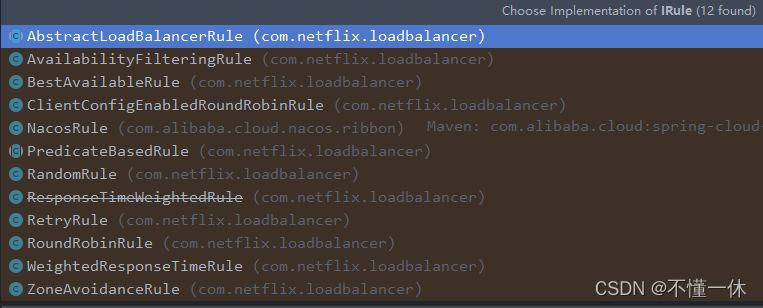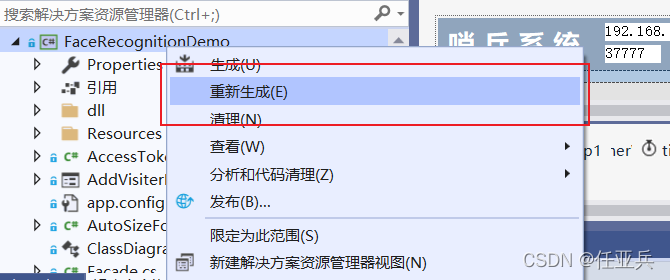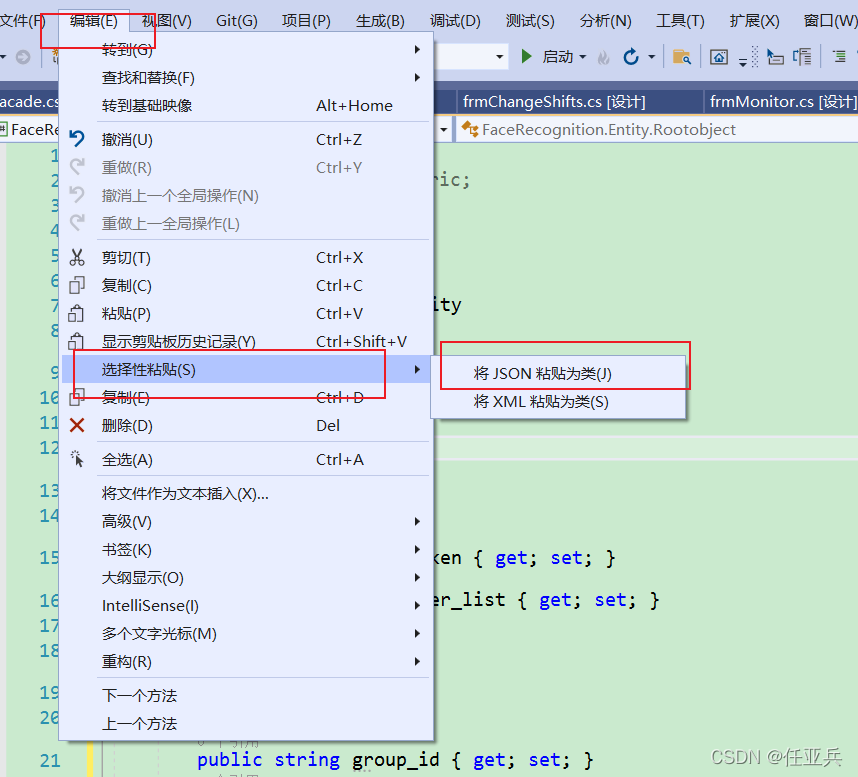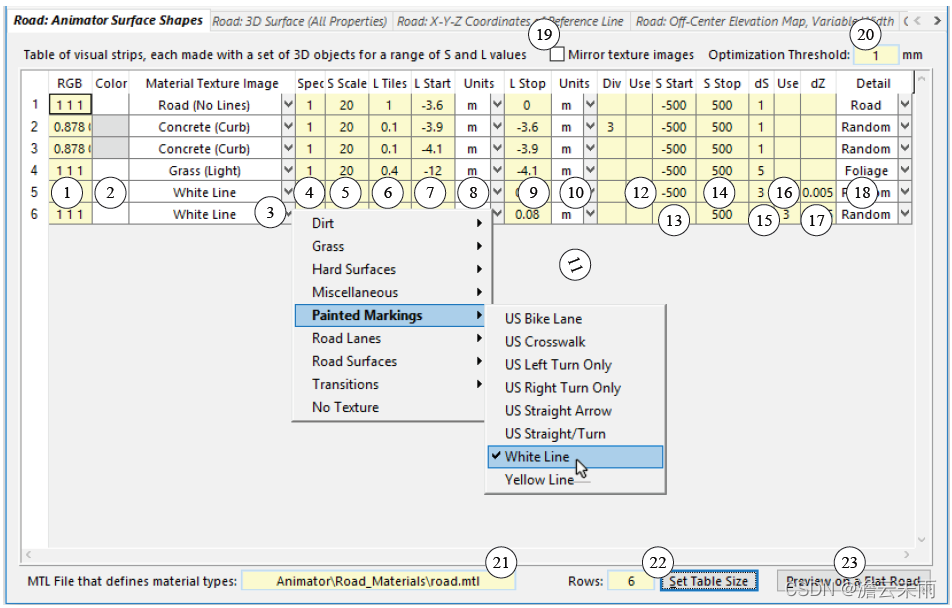当前位置:网站首页>Application of kotlin - higher order function
Application of kotlin - higher order function
2022-07-02 08:35:00 【I can still size it.】
Higher order functions are very suitable for simplifying various functions API Call to , some API The original usage of is simplified by using higher-order functions , Whether in terms of ease of use or readability , May be greatly improved .
simplify SharedPreferences Usage of
The most primitive direction I learned before SharedPreferences The code for storing data in is as follows :
// obtain SharedPreferences.Editor object
val editor = getSharedPreferences("data",Context.MODE_PRIVATE).edit()
editor.putString("name","ZLS") // add to String Type data
editor.putInt("age",18)
editor.putBoolean("married",false)
editor.apply() // Submit data
But in the extension library indicated by the red arrow , Added his simplified usage 
It contains a code similar to the following , Can greatly facilitate SharedPreferences Use
fun SharedPreferences.edit(block: SharedPreferences.Editor.() -> Unit){
val editor = edit()
editor.block()
editor.apply()
}
Extend the function to SharedPreferences Class added a edit function , And it also receives a function type parameter , therefore edit Function is naturally a higher-order function . because edit Owned in function SharedPreferences The context of , Therefore, it can be called directly here edit() Method to get SharedPreferences.Editor object . in addition edit The function receives a SharedPreferences.Editor Function type parameters for , So we need to call editor.block() Calling a function type parameter , We can add data to the specific implementation of function type parameters . Finally, call editor.apply() Method to submit data , So as to complete the data storage operation .
The simplified code is as follows :
getSharedPreferences("data",Context.MODE_PRIVATE).edit{
putString("name","ZLS")
putInt("age",18)
putBoolean("married",false)
}
simplify ContentValues Usage of
ContentValues Mainly used for combination SQLiteDatabase Of API Storing and modifying data in a database , Specific basic usage, such as Next :
val values = ContentValues()
values.put("name", "Game of Thrones")
values.put("author", "George Martin")
values.put("pages", 720)
values.put("price", 20.85)
db.insert("Book", null, values)
The following describes how to make it simple by creating a new method :
First new ⼀ individual ContentValues.kt file , And then define a cvOf() Method :
fun cvOf(vararg pairs: Pair<String, Any?>): ContentValues {
}
The purpose of this method is to build a ContentValues object .
First ,cvOf() Method receives a Pair Parameters , That is to use A to B Parameter type created by syntax structure , But a parameter is added in front of it vararg keyword , It corresponds to Java Variable parameter list in , Allow passing... To this method 0 individual 、1 individual 、2 One or even any number Pair Parameters of type , These parameters are assigned to use vararg Above this variable declared , And then use for-in Loop can traverse all the parameters passed in .
Let's look at the statement Pair type . because Pair Is a data structure of key value pairs , Therefore, you need to specify the type of data corresponding to its key and value through generics .ContentValues All keys of are string type , Here you can put Pair The generic type of the key is specified as String. but ContentValues There can be many types of values ( String type 、 integer 、 floating-point , Even null), So we need to Pair The generic type of the value is specified as Any?. This is because Any yes Kotlin Common base class for all classes in , amount to Java Medium Object, and Any? It means that null values are allowed to be passed in .
fun cvOf(vararg pairs: Pair<String, Any?>): ContentValues {
val cv = ContentValues()
for (pair in pairs) {
val key = pair.first
val value = pair.second
when (value) {
is Int -> cv.put(key, value)
is Long -> cv.put(key, value)
is Short -> cv.put(key, value)
is Float -> cv.put(key, value)
is Double -> cv.put(key, value)
is Boolean -> cv.put(key, value)
is String -> cv.put(key, value)
is Byte -> cv.put(key, value)
is ByteArray -> cv.put(key, value)
null -> cv.putNull(key)
}
}
return cv
}
when Statement entry Int After conditional branch , Under this condition value Will be automatically converted to Int type , Instead of Any? type , So you don't need to be like Java In that way, another downward transformation , This function is if The same applies in the statement .
With this cvOf() After method , Use ContentValues It becomes easier when , For example, you can insert a piece of data into the database and write :
val values = cvOf("name" to "Game of Thrones", "author" to "George Martin", "pages" to 720, "price" to 20.85)
db.insert("Book", null, values)
Besides , You can also use apply Function for secondary optimization
fun cvOf(vararg pairs: Pair<String, Any?>) = ContentValues().apply {
for (pair in pairs) {
val key = pair.first
val value = pair.second
when (value) {
is Int -> put(key, value)
is Long -> put(key, value)
is Short -> put(key, value)
is Float -> put(key, value)
is Double -> put(key, value)
is Boolean -> put(key, value)
is String -> put(key, value)
is Byte -> put(key, value)
is ByteArray -> put(key, value)
null -> putNull(key)
}
}
}
As mentioned above KTX A library with the same function is also provided in the library contentValuesOf() Method , Usage is as follows :
val values = contentValuesOf("name" to "Game of Thrones", "author" to "George Martin", "pages" to 720, "price" to 20.85)
db.insert("Book", null, values)
Usually when writing code , Use it directly KTX Provided contentValuesOf() The method is ok .
边栏推荐
- How to apply for a secondary domain name?
- Gateway 简单使用
- When a custom exception encounters reflection
- install. IMG production method
- Learn to write article format
- 文件上传-upload-labs
- Web security -- Logical ultra vires
- ICMP协议
- What are the platforms for selling green label domain names? What is the green label domain name like?
- C language replaces spaces in strings with%20
猜你喜欢

Generate database documents with one click, which can be called swagger in the database industry

HCIA - application layer

类和对象(类和类的实例化,this,static关键字,封装)

Openfeign facile à utiliser

Installation and use of simple packaging tools

Use C language to receive JSON strings

Don't know mock test yet? An article to familiarize you with mock

2022 Heilongjiang latest construction eight members (materialman) simulated examination questions and answers

Carsim 学习心得-粗略翻译1

HCIA—数据链路层
随机推荐
Library function of C language
Jumping | Blue Bridge Cup
STL quick reference manual
群辉 NAS 配置 iSCSI 存储
Sqli labs level 12
Learning C
Classes and objects (instantiation of classes and classes, this, static keyword, encapsulation)
Carsim 学习心得-粗略翻译1
Sentinel 简单使用
Routing foundation - dynamic routing
Sparse matrix storage
Carla-UE4Editor导入RoadRunner地图文件(保姆级教程)
CarSim learning experience - rough translation 1
链表经典面试题(反转链表,中间节点,倒数第k个节点,合并分割链表,删除重复节点)
C language custom type enumeration, Union (clever use of enumeration, calculation of union size)
Carsim-问题Failed to start Solver: PATH_ID_OBJ(X) was set to Y; no corresponding value of XXXXX?
Force buckle method summary: sliding window
Shortcut key to comment code and cancel code in idea
文件上传-upload-labs
程序猿学英语-指令式编程